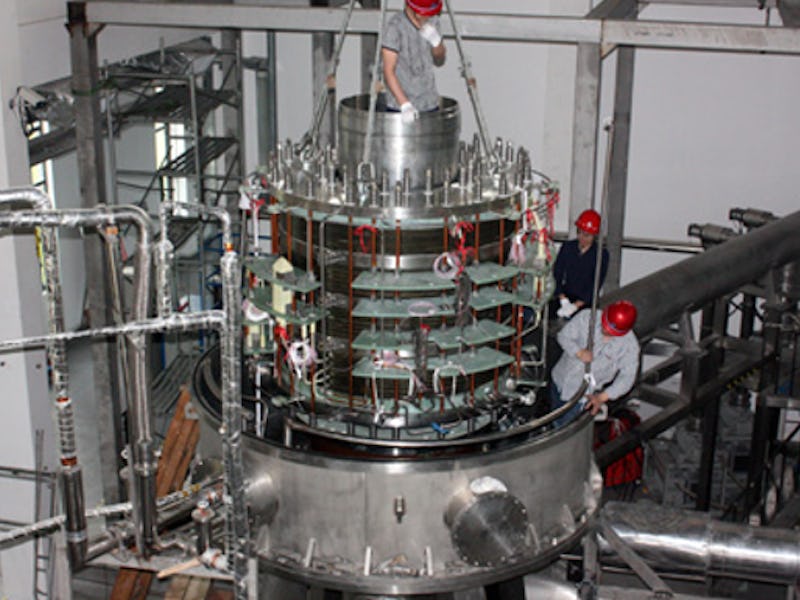The Chinese Are Winning the Magnet Race and it Matters

Engineers at The Chinese Academy of Sciences’ High Magnetic Field Laboratory have created the world’s strongest, most massive magnetic field. They are hoping this project will lead to more advanced medical scanning technologies, like those used in Magnetic Resonance Imaging machines — aka MRIs.
The superconductive magnet’s field is about 200,000 times stronger than that of the Earth’s, measuring over 10 Tesla — a measurement used to determine the strength of a magnetic field. To give some perspective, the magnets used at CERN’s CMS detector and the LHC measure in at 4 Tesla and 8 Tesla respectively, while the Earth’s magnetic field varies between 25 and 65 microTeslas.
The world record for the most powerful continuous magnetic field is held by the 45 Tesla, which is in Florida. With the completion of this magnet, China says they have caught up to the U.S. and other technologically advanced nations. But they aren’t finished yet. Their goal is to create a magnet powerful enough to generate a 60 Tesla field.
MRI machines depend on magnetic fields to help doctors see what's going on inside the body.
So why does this matter? Strong magnets are incredible tools that allow scientists and engineers to discover new properties in existing materials, which is key to shrinking and advancing current technologies, like cell phones and certain medical devices, and even high-speed transportation systems like HyperLoop One.
Magnetic resonance imaging systems — also known as MRI machines — rely on magnets to produce a magnetic field that allows doctors to see inside the human body. The stronger the magnetic field, the clearer the MRI image will be. Scientists believe that with a 10 Tesla MRI machine, they could image an area a tenth of a millimeter in diameter, enabling doctors to image individual neurons.
Artist rendition of what neurons look like.
The Chinese team says this superconducting magnet will not be used for medical purposes, but the technology that powers it will help engineers develop more powerful MRI machines in the future. Before that can happen, researchers need to get past a few hurdles, namely how to make the magnets sturdy enough to withstand the force generated by magnetic fields in excess of 20 Tesla.